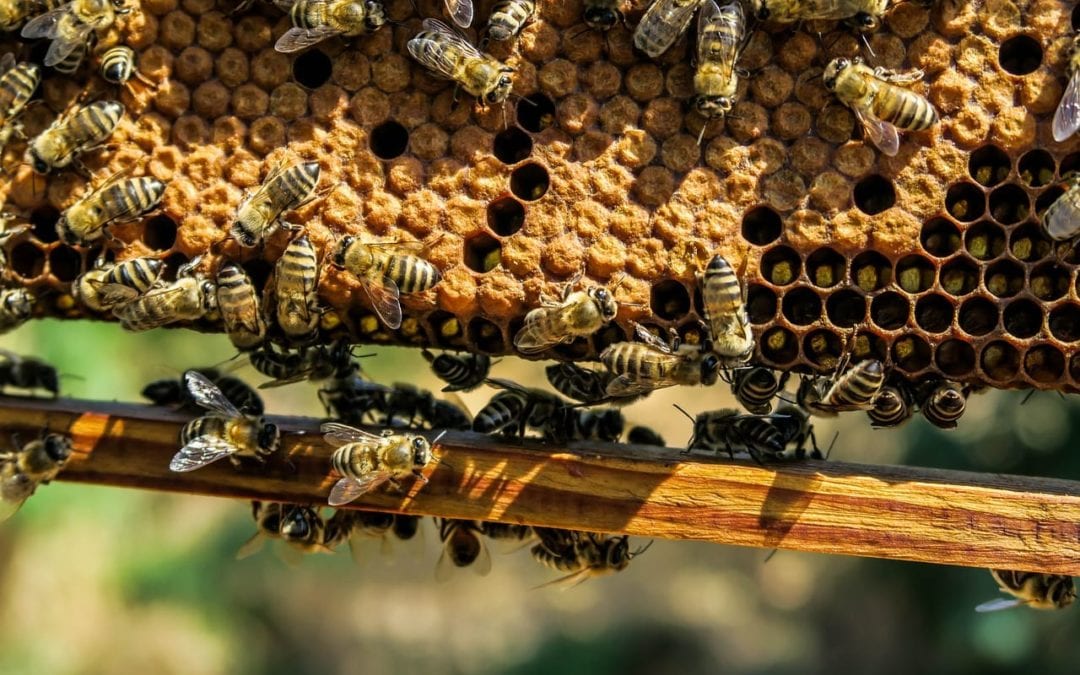I am starting my third year of beekeeping this spring. Unfortunately, I am starting with new bees in my hives. The first year, I did not realize how dangerous those hive beetles that I kept seeing were. After all, they came with the bees in the packages that I bought. It was so bad that I had teaming beetle larva in the bee food within a week.
The next year, I cut down some trees (well, okay, I paid someone to cut down the trees) to allow for more sun on my hives. I also got nucs, which are small colonies of bees. One of the hives did well until March when it died out. You may recall that was the hive that stung me several times in February. I won’t say I wasn’t sorry to lose them, they are little lives after all, but I was glad/relieved/something positive to be installing nicer bees in their old home.
This winter was hard on bees. Warm then cold, then too cold, then wet and it was too much for many hives. To make a long story short, I am starting fresh this year with two sets of package bees and a nuc.
A package of bees is a box of bees that can be shipped or picked up. The bees come in a small wood and wire box. The 8″ x 6″ x 18″ box has two sides of the screen and the top, bottom, and edges are made of wood that is lined with the screen. The top has a hole cut into it that is perfectly sized for a can of syrup to fit into and have the rim catch and therefore not let it fall into the box. The queen is in a tiny cage near the can.
Packaged bees are sold by the pound. With 3-4,000 bees per pound, there are about 10,000 bees in a 3-pound package. I’ve seen 3 and 5-pound packages for sale. And, no. No one actually counts the bees. The queen will be a mated queen ready to start laying, but the bees are not her offspring and may not even be her breed. The queens are raised, then bees are collected from several hives. The queen bee is placed in her cage, the worker bees are funneled into the box, and the syrup can with tiny feeder holes fills the wooden box hole. A small lid is stapled on top to keep any bees from wandering.
To unpackage the bees, the reverse happens. When the hive is ready, you suit up and take the wooden lid off the box. A few bees may escape if the queen cage has a notch space. The can slides out if tilted upside down. Now all the bees can escape, so the lid is moved back into place for a bit while you work with the queen.
Because the queen is a random (to the bees) queen, if they could get to her, they would have killed her. If the transit is long enough, the bees will have had time to get to know the queen and recognize her as theirs. In my case, the bees spent six days in transit, so we were sure that they thought the queen was theirs.
The queen box comes with a cork. The bees will not chew through the cork, so we have to remove it. The cork is then usually replaced with candy (or marshmallow the only candy we had in our house). This year, I removed most of the cork and left the queen cage between the frames. I felt comfortable skipping the candy step because of prolonged transport.
We then put a cup or two of bees on top of the bee cage. The rest of the bees were shaken into the hive in a space between the frames and then on top of the frames. The syrup can be placed on top of the divider for the bees to eat, and the top replaced. I had so many problems with hive beetles before that we will come out later and treat for them before the larva cells are capped and some hive beetle would therefore survive.
A nuc of bees is easier and probably better. A beekeeper has taken a queen and put her with bees in a small hive. Think tiny house for bee hives. This nuc hive has five frames in the hive. These five frames are taken out and placed into the new hive with five empty frames on the outsides. While it is good to identify the queen, we did not see her today. The advantage of a nuc is that there are all stages of bees in the hive. I installed the bees today, and tomorrow new bees will be hatched out. With the package bees, it will be about three weeks before I have new bees. The nuc (in my case) comes with an experienced beekeeper that will help me. Jerry Brewer met me to get my nuc installed and get my package bees treated for hive beetles. There are several in the bee club that has helped me. I may know more about pathophysiology, diseases, and treatment, but they know a lot of practical information. Practical information sometimes includes little things, like how not to get stung.
They say the third time is a charm. I know this year is my year. I have learned a lot in the past few years. I have been to veterinary medical continuing education and also learned from our bee club meetings. I have even presented to the bee school about diseases and parasites. This year, I have a schedule and a plan. My bees will succeed.
Check out our FaceBook live videos to see the installation, queen checking, and nuc installation in action.

